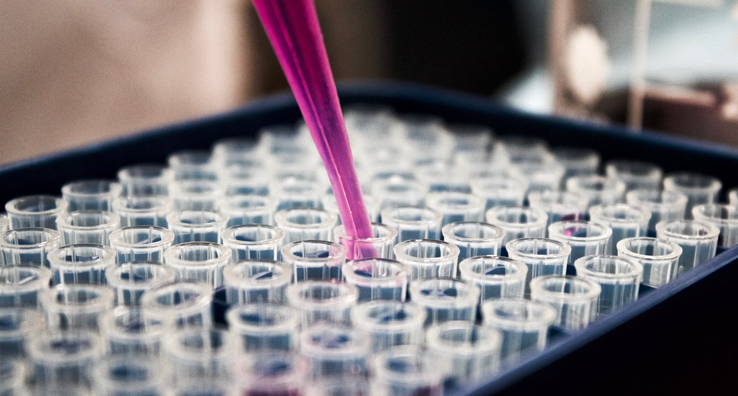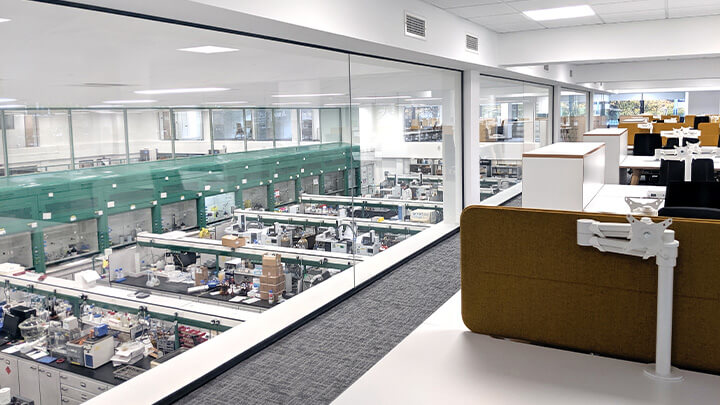Nitrosamine impurities like N-nitrosodimethylamine (NDMA) have raised significant concerns within the pharmaceutical industry, as highlighted by the US FDA and other regulatory agencies, due to their potential carcinogenic effects
Nitrosamine impurities such as N-nitrosodimethylamine (NDMA) have been highlighted by the US FDA and other regulatory authorities as an area for concern. Accurate and sensitive testing is crucial to detect and quantify these impurities in pharmaceutical products, ensuring patient safety and compliance with regulatory standards. The precision of such testing is vital for identifying trace levels of nitrosamines and implementing appropriate measures to mitigate their presence and maintain the integrity of pharmaceutical products.
In February 2021, the FDA have issued a guidance “Control of Nitrosamine Impurities in Human Drugs, Guidance for Industry”. This document provides guidance on steps to detect and prevent unacceptable levels of nitrosamine impurities in pharmaceutical products. This was published alongside a recommendation that pharmaceutical manufacturers should conclude risk assessments of approved / marketed products to mitigate nitrosamine impurities in their products within 6 months of publication date (March 31, 2021).
Nitrosamine impurities, classified as a probable human carcinogen, became a focus in July 2018, when the FDA announced a recall of some angiotensin II receptor blocker (ARB) medicines. In 2019, some over-the-counter medicines used to prevent and relieve heartburn such as ranitidine, were also the subject of some recalls with the HSA in Singapore and Swissmedic laboratory (OMCL) also detecting levels of contamination with NDMA in certain metformin preparations, used in the treatment of type 2 diabetes. More recently the FDA has issued an alert following the recall of some nizatidine products in association with suspected low levels of NDMA.
Although nitrosamine impurities have been found in only some drug products, and batches of those products have been recalled when there were unacceptable levels of these impurities, nitrosamine impurities might exist in other APIs and drug products due to use of certain processes and materials that may produce nitrosamine impurities.
Additional impurities including N-nitrosodiethylamine (NDEA), N-nitrosoethylisopropylamine (NIEPA), N-nitrosodiisopropylamine (NDIPA), N-nitrosodibutylamine (NDBA), and N-nitrosomethyl-4-amino-butyric acid (NMBA) have also been flagged as potential nitrosamine impurities. The FDA has been working closely with industry to ensure products entering the market do not contain these impurities in the future, whilst establishing suitable analytical methods to determine acceptable levels of these nitrosamine impurities and establish interim limits. In September 2019, the EMA began a review under Article 5(3) of Regulation (EC) No 726/2004 to provide guidance to marketing authorisation holders on how to avoid the presence of nitrosamine impurities in human medicines. As part of this review, in early 2020, the CHMP requested that marketing authorisation holders for human medicines conduct a risk evaluation in order to identify products at risk of N-nitrosamine formation or (cross-) contamination.
The FDA has released the following methods for the determination of NDMA impurities in drugs.
GC/MS Headspace Chromatography Mass Spectrometry Approach
The FDA Office of Testing and Research have developed a combined GC/MS headspace method for the simultaneous evaluation of four nitrosamine impurities in ARB drug substance and drug product. These impurities are; N-nitrosodimethylamine (NDMA), N-nitrosodiethylamine (NDEA), N-nitrosodiisopropylamine (NDIPA), and N-nitrosoethylisopropylamine (NEIPA). The method was developed and validated on valsartan drug substance and drug product.
At Intertek we also offer a GC-MS/MS approach which has allowed our experts to achieve excellent LOD and LOQ values. Overall, GC has proved extremely useful for some difficult projects, helping us to present an alternative and successful route to avoiding challenges associated with Liquid Chromatography co-elution of NDMA and DMF, as well as other potential interferences, where present. This flexibility in platform approaches means we can apply sample and nitrosamine-specific, tailored analytical solutions that are highly relevant for your nitrosamine testing needs.
Liquid Chromatography-Tandem Mass Spectrometry (LC-MS/MS) Method for the Determination of NDMA in Ranitidine Drug Substance and Solid Dosage Drug Product
This method is a liquid chromatography-tandem mass spectrometry (LC-MS/MS) method for the determination of NDMA in ranitidine drug substance and drug product. This LC-MS method based on a triple-quad platform may be used as an alternative or confirmatory method for the liquid chromatography high resolution mass spectrometry (LC-HRMS) method. The triple-quad platform is more widely available than the LC-HRMS platform.
Liquid Chromatography High Resolution Mass Spectrometry (LC-HRMS) Method for the Determination of NDMA in Ranitidine Drug Substance and Drug Product
The FDA have observed that the method for testing angiotensin II receptor blockers (ARBs) for nitrosamine impurities is not suitable for testing ranitidine because heating the sample generates NDMA. A LC-HRMS method was subsequently developed by the FDA to measure the levels of NDMA in ranitidine drug substance and drug product following ICH Q2(R1), with LOD 10ng/g, lower LOQ 33ng/g and upper LOQ 3333ng/g.
Intertek's Nitrosamine Impurity Analysis Services
Our GMP analytical team are experienced in providing analytical services according to FDA GC-MS, GC-MS/MS, LC-MS/MS and LC-HRMS methods, including performing the required method validations where the data can be used to support regulatory submissions or quality assessment of the API or drug product.
With scientists who are adept at
method development and validation of suitable analytical procedures, we regularly help clients overcome the challenges of low detection levels, difficult matrices and identification of unknowns in the course of
pharmaceutical impurities analysis. Additionally, we offer highly sensitive and specific method development and validation expertise to assess other carcinogenic or
genotoxic impurities in drug products.
In addition to experienced pharmaceutical impurity analysis, we can support with toxicological risk assessments. Our experienced consultants conduct risk assessments to address the impact associated with exposure to residual solvents, process impurities, extractables & leachables, elemental impurities (ICH Q3D) and other substances that may find their way into a given pharmaceutical product.


